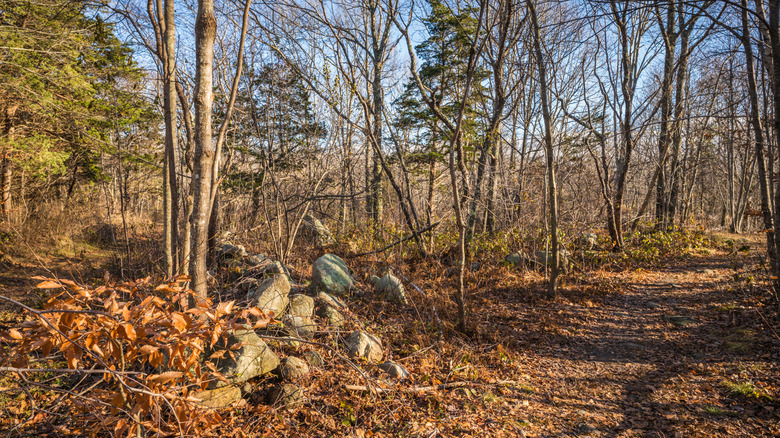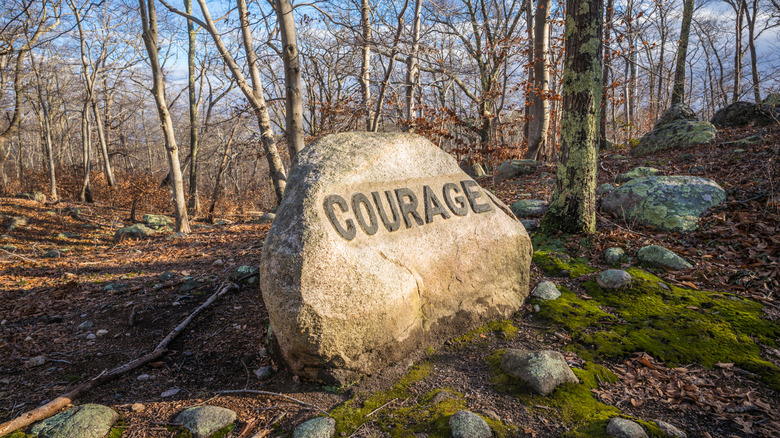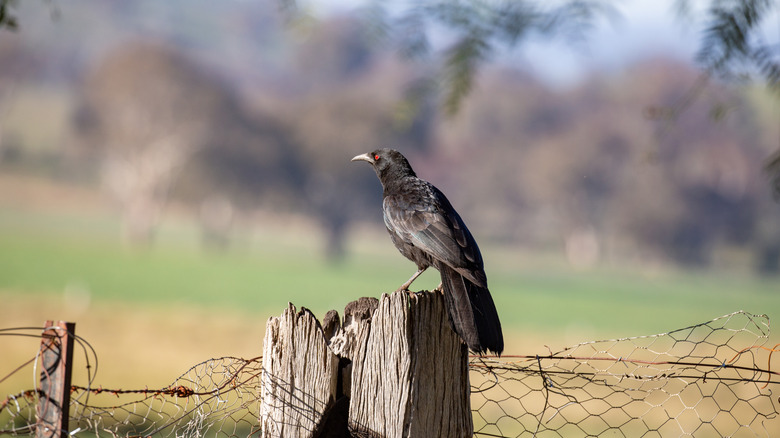This Abandoned New England Town Is A Story-Laced Hiking Haven Full Of Legendary Boulders
The dogs are long gone, but their legacy lingers in the name of one of Massachusetts's most curious destinations. Dogtown is an abandoned stretch of wilderness where nature has spent the better part of two centuries reclaiming what was once Cape Ann's richest settlement. The community that housed 100 families and 75 homes at its peak in the late 1700s now only exists as a network of hiking trails threading through pine, littered with famous carved boulders that spell out messages like "Courage" and "Perseverance."
During the Great Depression, the eccentric academic Roger Babson arranged for dozens of inspirational phrases to be carved into granite faces, creating what amounts to New England's most unusual motivational trail where boulders offer live advice. Located just 35 miles from Boston Logan International Airport, you can easily combine a Dogtown exploration with a stop in nearby Gloucester — it's just a six-minute drive away for harbor views in America's oldest seaport. Meanwhile, a bit further away at 15 minutes, there's Rockport, known for its coastal charm and interesting shops. There's even good ol' Salem, a spooky stop year-round, at just half an hour's drive.
Babson's scattered life lessons
"Whoever heard of such foolish notions?" Leila Webster Adams complained (via Babson Magazine), when one of her rocks was carved into without her permission. Certainly, Babson's project was a questionable use of Depression-era funds back then, but it's ironically now synonymous with Dogtown. Said carved rocks are found throughout the forest, turning the trail into something between a treasure hunt and a very New England approach to outdoor inspiration.
Babson consulted what he called his personal "Good Cheer Library" for the 24 slogans his hired Finnish stonecutters chiseled into granite, ranging from timelessly practical like "Kindness" to more specific ones like "When Work Stops, Values Decay." Some even feel comically direct: "Be On Time," "Be Clean," "Help Mother." Babson called this collection his "Life's Book" and was convinced that other cities would incorporate it into their educational systems. (They didn't.)
The Babson Boulder Trail winds through roughly 3,600 acres of forest, connecting these inscriptions with the numbered cellar holes that mark former homesteads. Finding them all requires a fair amount of bushwhacking — some hide in dense scrub while others sit more prominently in open clearings.
Modern mysteries and urban legends in Dogtown, Massachusetts
All this talk of inspirational boulders might make Dogtown sound like a cheerful woodland meditation retreat, but the carved messages tell only half the story. After established families packed up for better opportunities near the harbor, their empty houses didn't stay vacant long. Drifters and social outcasts moved in; some of them were widows who kept large dogs for protection — which eventually gave the area its name when the owners died and their dogs roamed free.
Some residents developed particularly colorful reputations. Thomazine "Tammy" Younger earned the nickname "Queen of the Witches" from her perch on Fox Hill, where she allegedly cursed ox teams carrying fish unless drivers paid her a toll for safe passage. In 1921, the New York Times published an article suggesting that Peg Wasson transformed into a black crow to spy on soldiers, who eventually shot her down with a silver button — the same one a doctor later extracted from Wasson's injured leg back home. By 1830, even the last resident — a freedman named Cornelius Finson — was removed to a poorhouse in Gloucester after being found half-dead in a cellar.
More recently, someone has been creating an unsettling installation that locals call the "toy cemetery" which is exactly as creepy as it sounds. No matter what you believe, Dogtown certainly knew how to clear a room (or town). When exploring the area, it's prudent to bring a trail map from Gloucester or Rockport bookstores, as the trails could get disorienting — though that's more likely more due to the genuinely confusing terrain than any possible supernatural influence.


